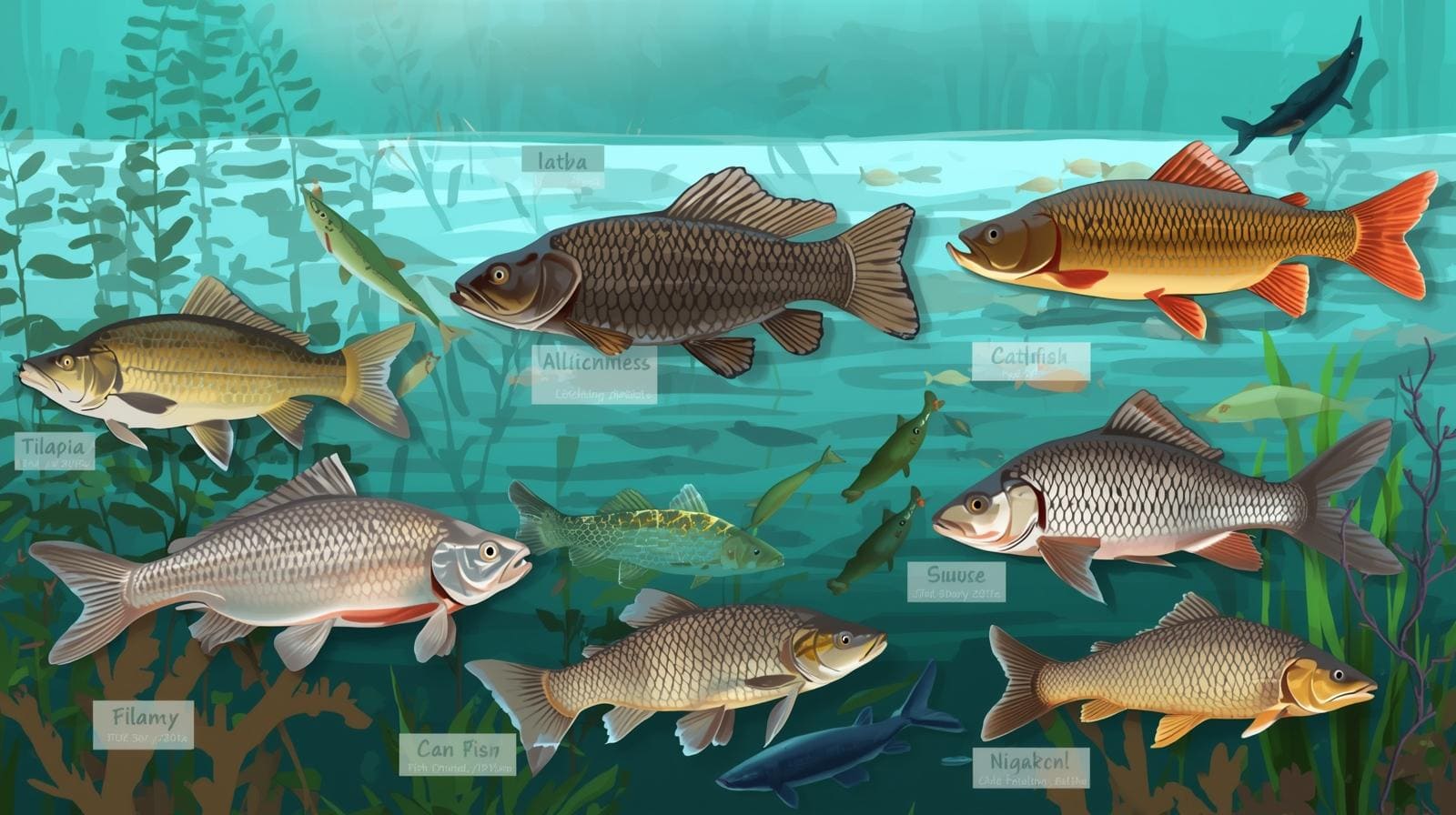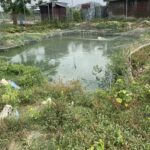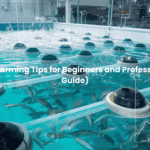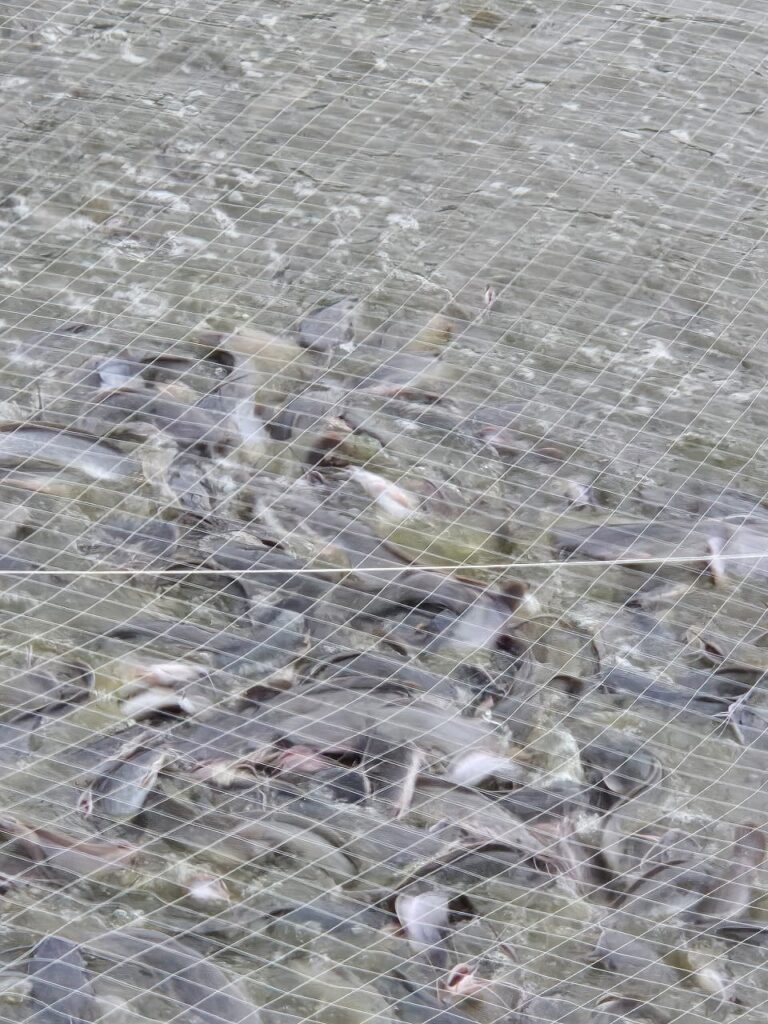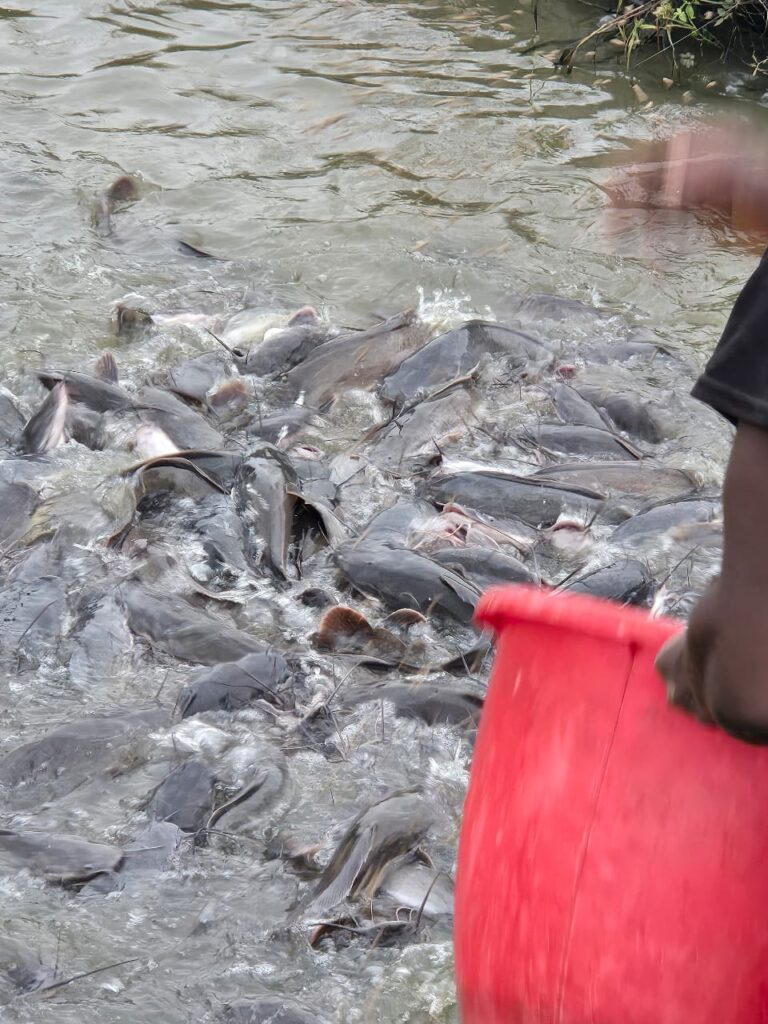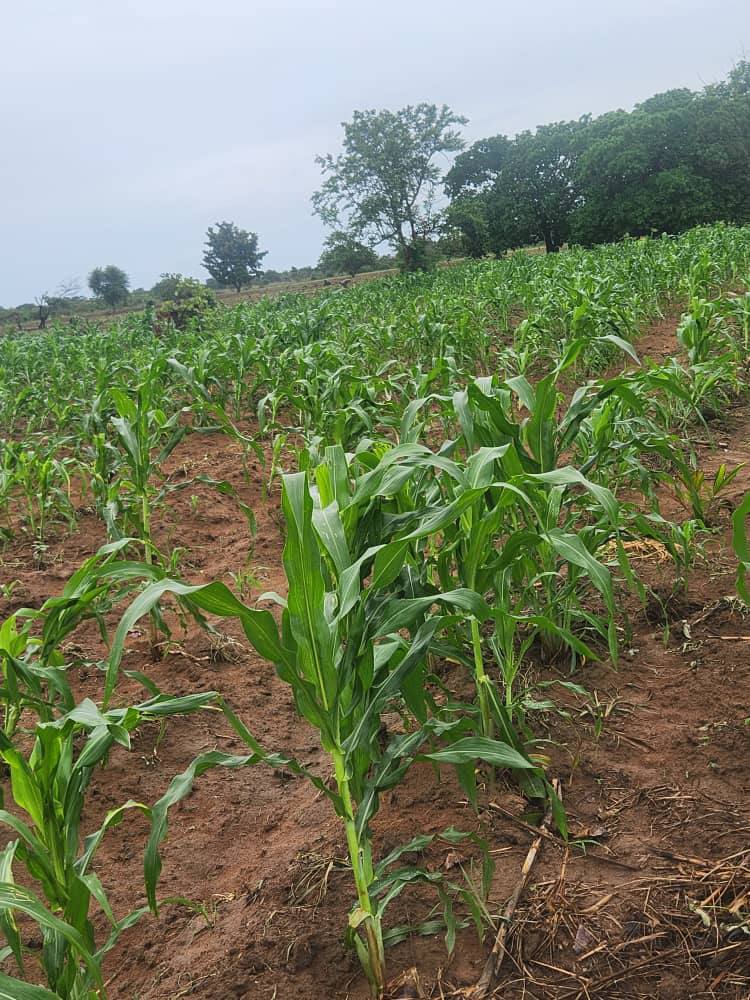Fish farming involves breeding, rearing, and harvesting fish in controlled environments like ponds, tanks, etc., from fingerlings to table-size fish for the purpose of making a profit. It is a lucrative business in Nigeria due to the high demand for fish, the country's abundant water resources, and the decreasing availability of fish in natural water …
Fish farming involves breeding, rearing, and harvesting fish in controlled environments like ponds, tanks, etc., from fingerlings to table-size fish for the purpose of making a profit.
It is a lucrative business in Nigeria due to the high demand for fish, the country’s abundant water resources, and the decreasing availability of fish in natural water bodies.
Choosing the right fish breeds is very crucial when looking to start your fish farming business, based on your goals and objectives for starting the business. If you stay with me to the end of this blog post, you will be able to make an informed decision on what type of fish to farm.
Importance of choosing the right fish breeds.
Choosing the right fish breeds is a vital determinant in running a successful and profitable fish farming business. This is because all fish breeds are not the same; hence, they cannot effectively grow in all weather conditions.
The right breed can affect productivity, profitability, and the overall success of the fish farming venture. Here’s why it’s so important. Each fish breed has unique characteristics that greatly influence its growth rate, productivity, and profitability.
Factors to Consider When Selecting the Best Fish Breeds
Below is a list of factors that should be considered when selecting a fish breed to make the right and informed decision:
1. Understand Fish Species and Their Characteristics
Different fish breeds have different characteristics and thrive under different conditions.
- Catfish: Tolerance of adverse environmental conditions, fast growth rates, and resistance to diseases
- Tilapia: hardy and rapid growth rate
- Carb: Adaptable and ideal for integrated farming systems
- Mackerel: Rounded and torpedo-shaped, with a slender, keeled tail base, and it has a fast growth rate.
2. Climate and Water Conditions
The climate and water quality are important determinants of fish breeding selection. For instance, catfish are warm-water fish. They thrive better in temperatures between 75°F and 85°F (24°C and 29°C).
In addition to that, test the water pH, oxygen levels, and salinity to ensure they match the requirements of your chosen species for proper growth and survival.
3. Market Demand and Profitability
As a fish farmer, the sole aim is to make a profit. However, fish farming profitability greatly depends on market demand. Research the level of demand, consumer preferences, and the selling price of different species in your locality.
This will help you in making an informed decision and ensure you don’t rear less demanded breeds, which might lead to loss.
4. Growth rate and maturity
All fish breeds don’t have the same growth rate. A fast growth rate is a very crucial factor in the fish farming business. Fish breeds with fast growth rates reduce the time for the fish to mature and reach market size, thereby allowing farmers to harvest multiple times in a year and make more profits compared to other species that take longer.
As such, it’s important to select the breed with fast growth rates for profitability.
5. Evaluating Farming Systems
Your choice of fish species determines the type of farming system that will best fit your fish species. For example, pond systems are suitable for species like carp and catfish, recirculating aquaculture systems (RAS) are effective for species like trout, and cage farming is good for tilapia in open water bodies.
Best Fish Breeds For Nigerian Farmers
1. Catfish
Most Nigerian fish farmers are involved in catfish farming. Catfish are in high demand in Nigeria, with a good return on investment when properly bred. Many customers opt for it as the best substitute for protein and because of its low cost.
Catfish have a very fast growth rate. It takes 4-5 months on average for them to reach market size. Below are some of the reasons why most fish farmers rear catfish:
- Growing demand for catfish
One of the reasons why most fish farmers opt for catfish farming is because of its profitability and its growing market demand. This creates an opportunity for catfish farmers to maximise sales and improve profit.
- High market prices
Catfish have higher market prices compared to other fish species. This implies that catfish farmers will make more profit per kg of catfish sold than they would for other fish species.
- Short production cycle
Catfish have a very short production cycle compared to other fish species. They can reach market size within 4-5 months. This enables catfish farmers to produce and harvest multiple turns of catfish in a year, thereby increasing their profitability.
- Lower capital investment
Catfish farming requires low capital, depending on the size of the farm. This allows the catfish farmer to start on a small scale and expand to a large scale with time.
2. Tilapia
These species are known for their fast growth and high market demand. In addition, they are hardy and have high disease resistance. Unlike other species of fish, tilapia can be stored and refrigerated for a long time.
Below are some of the benefits of tilapia fish farming:
- High market demand
Tilapia farming has a high market demand due to its popularity and high nutritional content. This allows fish farmers to have a very high return on investment.
- Fast growth
Tilapia are known for their rapid growth rate, allowing farmers to have more production cycles within a short time. They can reach market size within 4-5 months.
- Versatile feeding habits
Tilapia are omnivorous, which makes them adaptable to a variety of feeds, such as plants, insects, and agricultural byproducts. This reduces so much reliance on expensive feeds, thereby reducing the running cost of tilapia farming.
- Disease resistance
Tilapia has a high resistance to diseases compared to other fish species. This reduces the risk of disease outbreaks and treatments.
3. Carp
Carp is a popular fish breed, especially in freshwater aquaculture, known for its adaptability and fast growth. There are several species of carp, but the most commonly farmed are common carp, grass carp, and koi carp.
They are also a good breed to rear. It equally has a good market demand because it is nutritious and economical. It can be reared in ponds, tanks, etc.
Carp farming is profitable because it has a high survival rate and can feed on natural food sources in the water, thereby reducing the cost of feeding.
Carp fish also have fast growth rates, allowing farmers to produce many cycles within a short time and make profits.
However, carp farming does come with its challenges, like their tendency to muddy water with their feeding habits and the need for careful management to avoid overstocking and disease.
The common breeds reared in Nigeria are grass carp and silver carp.
4. Mackerel Fish
Mackerel are popularly known as ‘Titus fish.’ This is equally a very good fish species to rear in Nigeria. Mackerel farming is profitable due to its high demand.
It is a fast-growing, oily fish that is popular in both local and international markets due to its rich nutritional profile and excellent taste. It’s a highly valued species in commercial fishing and aquaculture.
However, this fish species takes a longer time to reach maturity compared to other species. It takes about 1-3 years to reach maturity.
Mackerel fish is a profitable fish species for farmers, especially for those targeting the export or high-demand local markets. However, it requires proper environmental management to ensure optimal growth conditions.
Frequently Asked Questions (FAQs)
Q: Can all fish species be reared in Nigeria
A: Not all fish species can be reared in Nigeria, given the differences in fish breeds’ characteristics and the conditions under which they grow.
Q: How many fish species are there?
There are numerous species of fish in the world, with an estimated 3,920 species described in the period 2010-2019.
Q: How do fish breathe?
A: Fishes breathe by means of their tissues known as gills.
Q: Do all fish swim in the horizontal position?
A: No. Most fish swim horizontally; however, there are some that swim vertically. Examples are the shrimpfish and seahorse.
Q: How long do fish live?
A: Different fish species have different life spans. The smaller species have a shorter lifespan than the larger ones. Fish can live for a few weeks, months, or more.
Conclusion
Selecting the right fish breed is a very crucial determinant of the success of your fish farming business and the overall well-being of your fish. By carefully evaluating and considering factors like climate and weather conditions, market demand, and farming systems, you can choose a species that aligns with your goals.
After you have decided on the type of fish that you want to farm. Contact Admumsho Nigeria Limited today to place your order and secure the best feed for your farm—or visit their distribution point in Ilorin to get started. Your farm’s success begins with the right feed, and Admumsho is here to deliver it.

